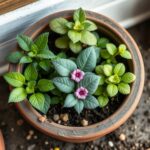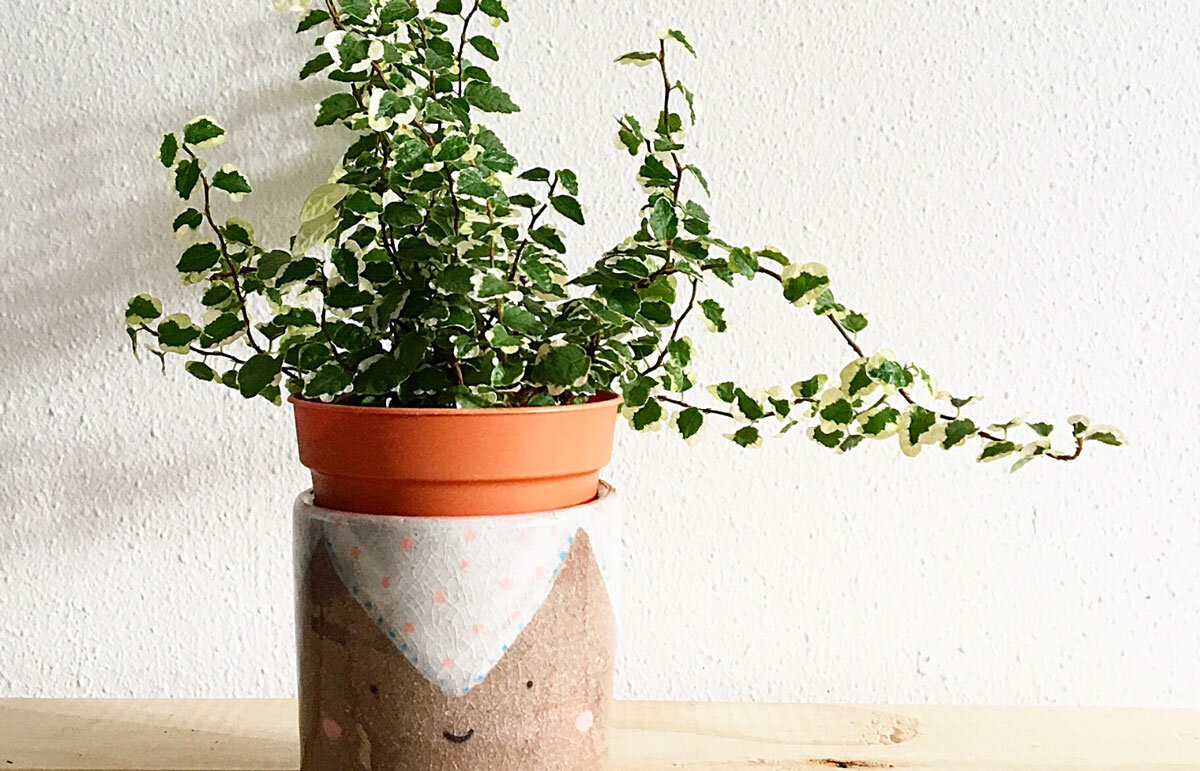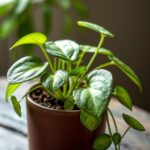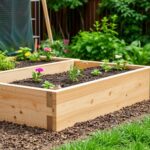What is the Difference Between a Potted Plant and a Planter? A Comprehensive Guide

When it comes to enhancing indoor and outdoor spaces with greenery, understanding the difference between a potted plant and a planter is essential. Many people use these terms interchangeably, but they refer to distinct concepts in gardening and home decor. A potted plant is typically a living plant grown in a container filled with soil, while a planter is a broader term that encompasses various types of containers used to hold plants. In this comprehensive guide, we will explore the features, purposes, and benefits of both potted plants and planters, helping you make informed choices for your gardening needs.
What is the Difference Between a Potted Plant and a Planter?
A potted plant refers to the living plant that is grown in a vessel, typically with soil that supports its growth, while a planter is the container itself that holds the potted plant and often contributes to the plant's aesthetics or functionality. The key difference lies in their definitions: potted plants are living entities that require care, sunlight, and water, whereas planters serve as the practical and decorative holding space for these plants. Planters can be made from various materials such as plastic, ceramic, or metal, and they may have drainage holes to ensure the health of the plant inside, whereas a potted plant emphasizes the specimen that is actively growing within that container.
Understanding Potted Plants
A potted plant typically consists of a plant surrounded by soil held within a container that allows for proper growth and development. These pots can vary in size, material, and shape, often characterized by their depth and drainage capacity to accommodate different types of plants. Potted plants play an essential role in decorating spaces and providing greenery to urban environments, making them suitable for indoor and outdoor settings. The health of a potted plant relies heavily on factors such as watering, sunlight exposure, and care taken by the owner, emphasizing their nature as living organisms that require maintenance.
Exploring Planters
A planter is a type of container specifically designed to hold potted plants or soil for planting. It can be made from various materials, including ceramics, metal, wood, and plastic, each offering unique aesthetic and practical benefits. Planters are designed to enhance the growth environment of plants and may include features like drainage holes, which prevent overwatering and root rot. They also come in diverse sizes and styles to suit different spaces and design themes, making them versatile options for home and garden decor while catering to the needs of various plants.
Materials Used in Planters
Planters can be constructed from numerous materials, each possessing distinct characteristics that affect their durability and appearance. Common materials include ceramic, which provides a classic look but can be heavy and fragile, and plastic, which tends to be lightweight and versatile but may not offer the same aesthetic appeal. Wood planters are popular for their natural charm, though they may require treatment to resist water damage. Metal planters, such as those made from aluminum or galvanized steel, combine durability with a modern vibe but can heat up quickly under sunlight. Understanding these materials helps gardeners choose the most suitable option for their specific plants and environment.
Drainage in Potted Plants
Proper drainage is crucial for the health of a potted plant, as it prevents water from accumulating at the bottom of the pot, which can lead to root rot and fungal diseases. Most planters are designed with drainage holes that allow excess water to escape, ensuring that the soil remains moist but not soggy. It’s essential for owners to monitor the moisture level of the soil and adjust watering habits accordingly, based on the type of plant and its requirements. Some gardeners also use potting mixes with improved drainage to further enhance the health of potted plants, ensuring they thrive in their environments.
Choosing Between a Potted Plant and a Planter
When deciding between a potted plant and a planter, one should consider the intended purpose, design, and care level required for both the plant and its container. A potted plant offers a living entity that brings life and air purification to an environment, while a planter serves as a supportive and aesthetic piece that may influence where and how the plant is displayed. It's important to match the right plant with an appropriate planter, taking into account factors like size, material, and maintenance needs. This harmony can enhance both the health of the plant and the overall ambiance of the space.
| Feature | Potted Plant | Planter |
|---|---|---|
| Definition | Living plant with soil | Container for holding plants |
| Purpose | Growth and decoration | Aesthetic and functionality |
| Material | Varies (organic) | Plastic, ceramic, metal, wood |
| Care | Needs water, sunlight | No care needed |
| Importance of Drainage | Essential for health | Helps maintain plant health |
Are planters and pots the same thing?
Planters and pots are often used interchangeably in everyday conversation, but they do possess distinct differences that can influence their usage in gardening and home decor.
Differences in Definition
Planters typically refer to larger containers that can hold multiple plants and usually come with drainage holes to allow excess water to escape. Conversely, pots are generally smaller and can be used for individual plants or herbs. While both are essential for growing plants, their size and functionality can vary significantly.
Materials Used
Planters are made from a diverse range of materials including ceramic, wood, and plastic, designed for outdoor and indoor use. Pots often use similar materials, but they can be more delicate and specialized for particular environments or plants. Here are some common materials:
- Ceramic: Popular for their aesthetic and insulating properties.
- Plastic: Lightweight and affordable, often with added drainage features.
- Wood: Offers a rustic appeal but requires more maintenance.
Purpose and Usage
The primary purpose of planters is to provide an environment for a community of plants, whereas pots are mainly for single plants. Planters often feature a decorative aspect that makes them suitable for outdoor arrangements, while pots are more functional and can be easily moved.
- Planters: Used in gardens, patios, or public spaces.
- Pots: Commonly used indoors for houseplants.
- Design: Planters often have elaborate designs, while pots are simpler.
Drainage Features
One of the most critical differences lies in the drainage capabilities of planters and pots. Planters almost always come equipped with drainage holes to facilitate water exchange, which is crucial for plant health. Pots may or may not have these features, sometimes requiring the owner to create drainage themselves.

- Planters: Often include multiple drainage holes.
- Pots: May have no or limited drainage methods.
- Health: Poor drainage can lead to root rot in both.
Design and Aesthetic Variations
When it comes to design, planters tend to be larger and more visually striking, suitable for landscaping or as centerpieces in outdoor settings. In contrast, pots often boast simpler designs catering to specific plant species or indoor styles.
- Planters: Can be customized for gardens or larger displays.
- Pots: Focused on individual plants and home decor.
- Materials: Planters may use more intricate designs compared to pots.
What is considered a potted plant?

A potted plant is typically defined as any plant that is grown in a container, which is often referred to as a pot. These containers can range in materials, sizes, and designs, allowing for versatility in plant selection and indoor or outdoor decorating. A potted plant may include a variety of species, from flowers to shrubs, and can either be used decoratively or for gardening purposes.
Characteristics of a Potted Plant
A potted plant has several key characteristics that distinguish it from plants grown directly in the ground. These include:
- Container: The plant is housed in a specific container, which can be made from materials such as plastic, ceramic, or metal.
- Soil: The container generally holds soil or a growth medium that allows for proper drainage and root development.
- Mobility: Potted plants can be easily moved, making them suitable for changing environments or indoor settings.
Types of Potted Plants
There are numerous types of potted plants suitable for a variety of settings. Common categories include:
- Houseplants: These are typically low-light plants grown indoors, like pothos and snake plants.
- Outdoor Plants: These are suited for the outdoors, such as geraniums and petunias.
- Herbs: Culinary herbs like basil and mint are also often grown in pots for convenience.
Benefits of Potted Plants
Potted plants offer various advantages, making them a popular choice among gardeners and homeowners:
- Space Efficiency: Ideal for small spaces, potted plants allow for gardening where traditional beds may not be possible.
- Control Over Environment: The ability to manage soil type and drainage can lead to healthier plant growth.
- Aesthetic Appeal: Potted plants can enhance the visual appeal of both indoor and outdoor spaces.
Care Requirements for Potted Plants
Proper care is essential for the health of potted plants, which typically includes several maintenance aspects:
- Watering: It's crucial to monitor soil moisture and adjust watering based on the specific needs of the plant.
- Fertilizing: Regular feeding is often necessary to ensure plants receive adequate nutrients.
- Repotting: As plants grow, they may require a larger pot to accommodate root expansion.
Considerations When Choosing Potted Plants
When selecting potted plants, several factors should be taken into account to ensure success:
- Light Conditions: Understanding the light availability in the intended location will influence plant choice.
- Climate: Select plants that are compatible with the environmental conditions, such as temperature and humidity.
- Size of Pot: Choose an appropriately sized pot to match the plant size and growth demands.
Can you put plants straight into a planter?

Yes, you can put plants straight into a planter, but there are several factors to consider to ensure the plants thrive. Here are some important points to keep in mind:
1. Choosing the Right Planter:
Different plants have varying requirements, and the choice of planter should cater to these needs.
- Size: Ensure the planter is large enough to accommodate the root system of the plant.
- Material: Use materials like ceramic, plastic, or wood that provide good drainage yet retain some moisture.
- Drainage Holes: Always choose a planter with drainage holes to prevent waterlogging, which can lead to root rot.
2. Preparing the Soil:
The type of soil used in the planter can significantly affect plant health.
- Soil Composition: Use a mix appropriate for the specific type of plant, such as potting soil for houseplants or cactus soil for succulents.
- Fertilization: Consider adding slow-release fertilizers to provide nutrients over time.
- pH Level: Check the soil pH to ensure it suits the plant type, as different plants have different acidity preferences.
3. Watering Considerations:
When putting plants directly into a planter, proper watering practices are crucial.

- Initial Watering: Water the plant immediately after potting to help settle the soil.
- Soil Moisture: Monitor the soil moisture regularly to prevent it from becoming too dry or too soggy.
- Watering Schedule: Adjust the watering frequency based on the season and the plant's specific needs.
4. Light Requirements:
Different plants have varying needs for sunlight, which must be taken into account when planting directly in a planter.
- Sun Exposure: Ensure the planter is placed in a location that provides adequate sunlight for the specific type of plant, whether that be full sun, partial sun, or shade.
- Rotate Planter: If possible, occasionally rotate the planter to allow even light distribution.
- Indoor vs. Outdoor: Consider whether the plant is suitable for indoor or outdoor conditions based on its light requirements.
5. Post-Planting Care:
After putting plants straight into a planter, post-planting care is essential for healthy growth.
- Mulching: Adding a layer of mulch can help retain moisture and suppress weeds.
- Pest Management: Regularly check for pests or diseases that may affect plant health.
- Growth Monitoring: Observe the plant for signs of growth or stress to adjust care as needed.
What is considered a planter?

A planter is typically defined as a container or vessel in which plants are grown, either indoors or outdoors. These containers come in various shapes, sizes, and materials, designed to facilitate the growth and maintenance of plants by providing the necessary conditions such as drainage, soil retention, and stability. The term planter can refer to anything from small pots used for houseplants to large boxes used for garden vegetables. Planters can be made from materials such as plastic, wood, metal, or ceramic, and they can be decorative as well as functional.
Types of Planters
Different types of planters serve various purposes and can be categorized by their shape, function, and material. Here are some common types:
- Traditional Pots: Often made from clay, ceramic, or plastic, these are the most common planters used for houseplants.
- Raised Beds: These are larger planters set above ground level, ideal for growing vegetables and flowers in gardens.
- Hanging Planters: These planters are designed to be suspended from ceilings or hooks, often used for trailing plant varieties.
- Window Boxes: These long, narrow planters are placed on window sills or railings and are great for growing herbs and flowering plants.
- Self-Watering Planters: Equipped with a reservoir that allows plants to absorb water as needed, they help in maintaining consistent moisture levels.
Materials Used for Planters
The material of a planter plays a crucial role in both aesthetics and plant health. Common materials include:
- Plastic: Lightweight and affordable, plastic planters are durable and come in a variety of styles and colors.
- Wood: A natural and rustic choice, wood planters are often treated to resist rot and insects.
- Ceramic: These planters have an attractive finish and are good for indoor plants but can be heavy and fragile.
- Metal: Often used for contemporary designs, metal planters can conduct heat but may require additional insulation for plant health.
- Concrete: Extremely durable and heavy, concrete planters are suitable for larger plants and outdoor settings.
Benefits of Using Planters
Utilizing planters instead of planting directly into the ground offers several advantages:
- Mobility: Planters can be moved easily, allowing for changes in location and sunlight exposure.
- Soil Control: Planters allow you to customize soil types and drainage, improving plant health.
- Pest Management: Elevated planters can reduce pest problems, providing a barrier from ground-dwelling insects.
- Space Utilization: Planters are perfect for urban gardening, enabling efficient use of small spaces.
- Aesthetic Appeal: Decorative planters enhance the visual interest of a space, adding color and texture.
Plant Care in Planters
Caring for plants in planters involves several key practices to ensure their health:
- Watering: Regular monitoring of moisture levels is essential; planters with drainage holes help prevent overwatering.
- Fertilization: Plants in planters may need more frequent fertilization due to limited soil, so choosing the right fertilizer is important.
- Sunlight Exposure: Understanding the light requirements of your plants allows you to place planters in suitable locations.
- Pruning: Regular trimming helps maintain plant shape and encourages healthy growth.
- Pest Control: Keeping an eye out for pests and diseases allows for quicker interventions, maintaining plant health.
Choosing the Right Planter
Selecting the right planter involves considering the needs of both the plants and the environment:
- Size: The planter should be proportionate to the plant's growth potential, allowing enough room for roots.
- Drainage: Ensure the planter has adequate drainage to prevent water logging, which can lead to root rot.
- Style: Choose a style that complements your decor and blends seamlessly with your living space.
- Insulation: For outdoor planters, consider materials that protect against temperature fluctuations, especially in extreme climates.
- Budget: Planters come in a wide range of prices, so consider how much you’re willing to invest based on quality and longevity.
Questions from Our Readers
What is a potted plant?
A potted plant refers to a live plant that is cultivated in a container, commonly known as a pot. This pot not only holds the soil and provides a structure for the plant but also helps in retaining moisture.
What is a planter?
A planter is generally a larger container designed to house one or more plants, often providing more space for roots to grow. Planters can be made from various materials and are often used for both indoor and outdoor gardening.
Can a potted plant be placed inside a planter?
Yes, a potted plant can be placed inside a planter, which is commonly done for decorative purposes. This allows for easier maintenance and the ability to switch out plants based on seasons or preferences.
Are potted plants and planters used interchangeably?
While the terms are sometimes used interchangeably in casual conversation, they refer to distinctly different items; a potted plant is the live plant in its soil, while a planter is the container that holds the plant.
See also:

If you want to read more articles like What is the Difference Between a Potted Plant and a Planter? A Comprehensive Guide, we recommend you check out our Planter category.
Leave a Reply
Related Articles